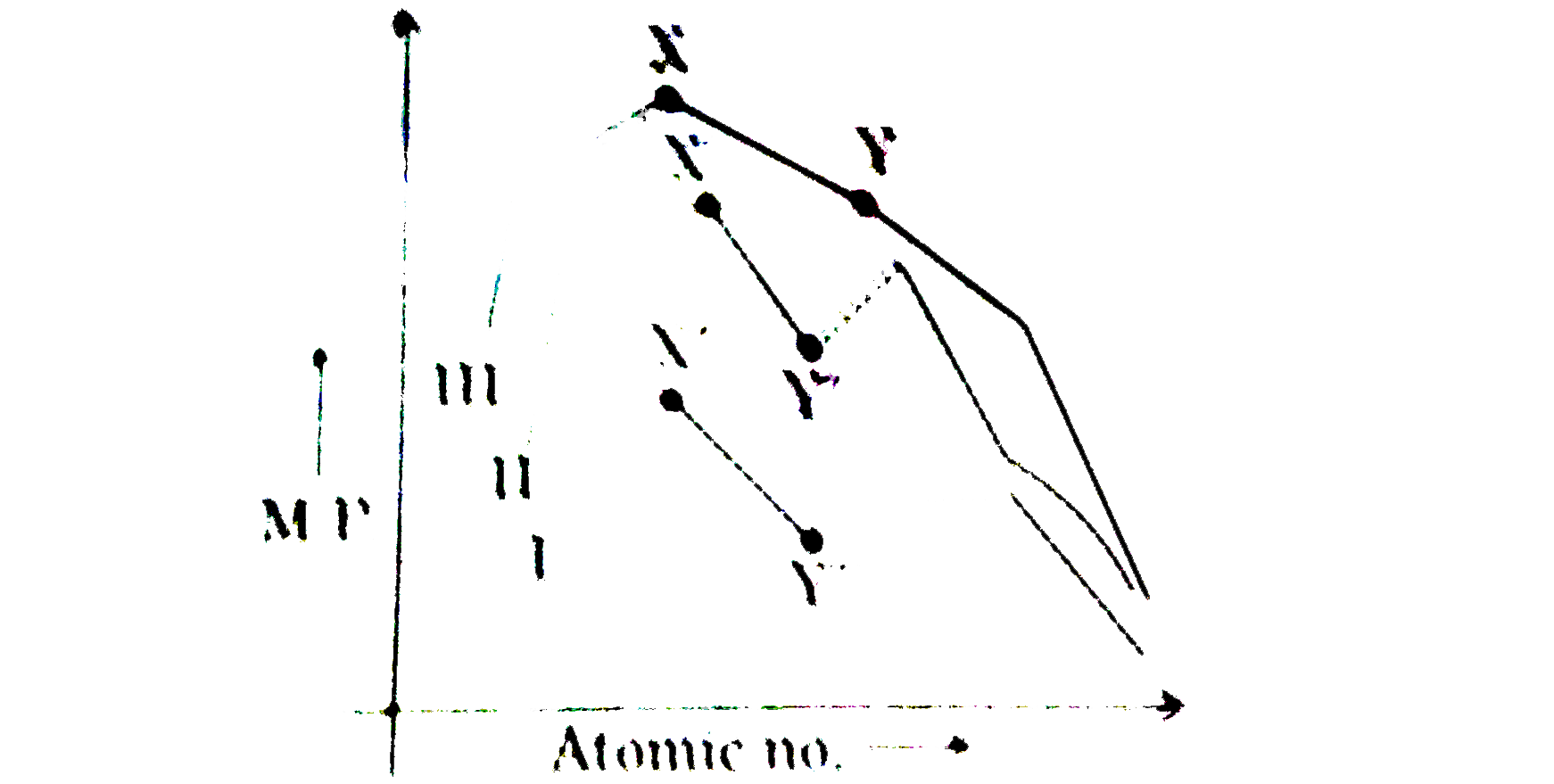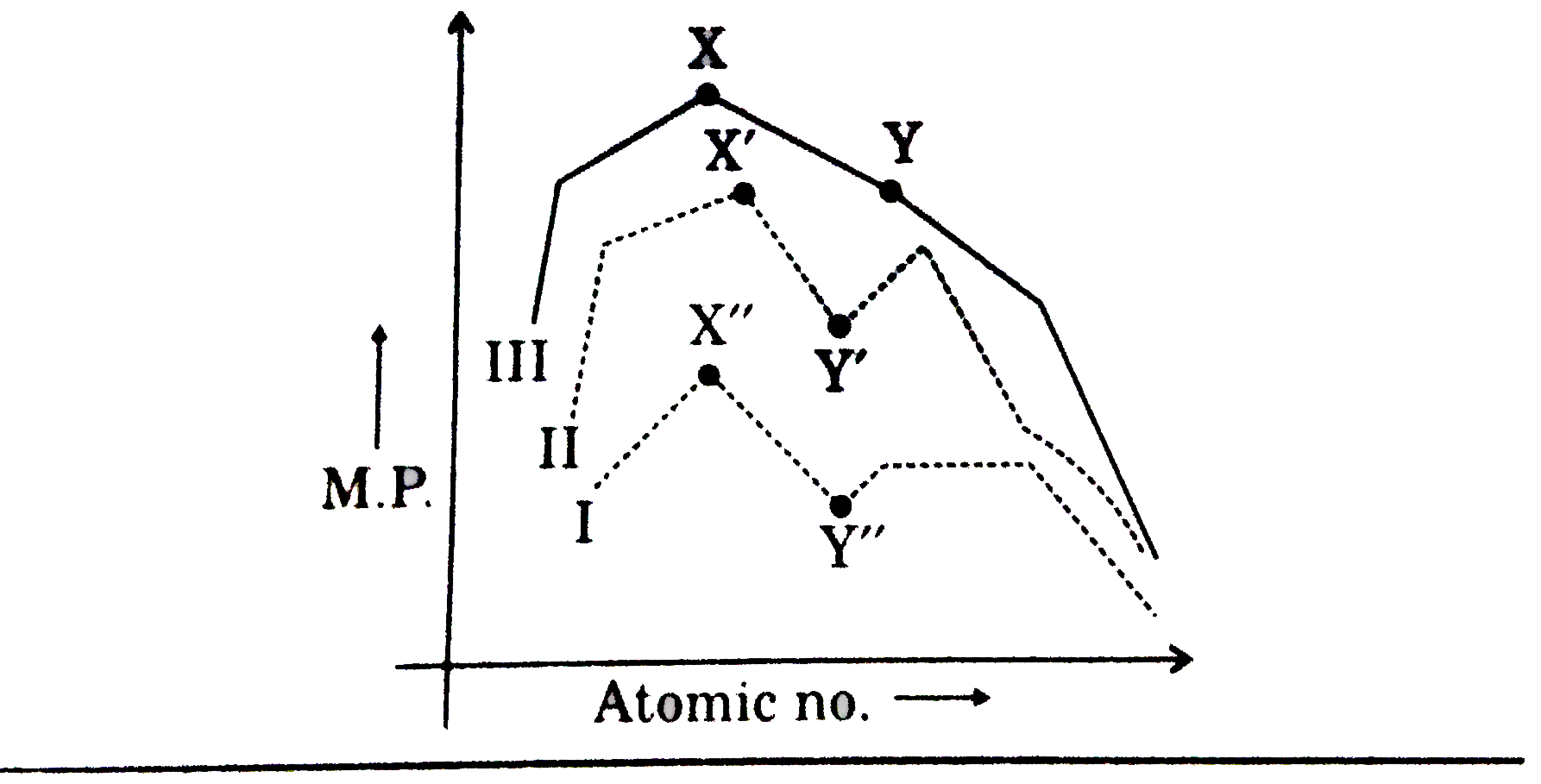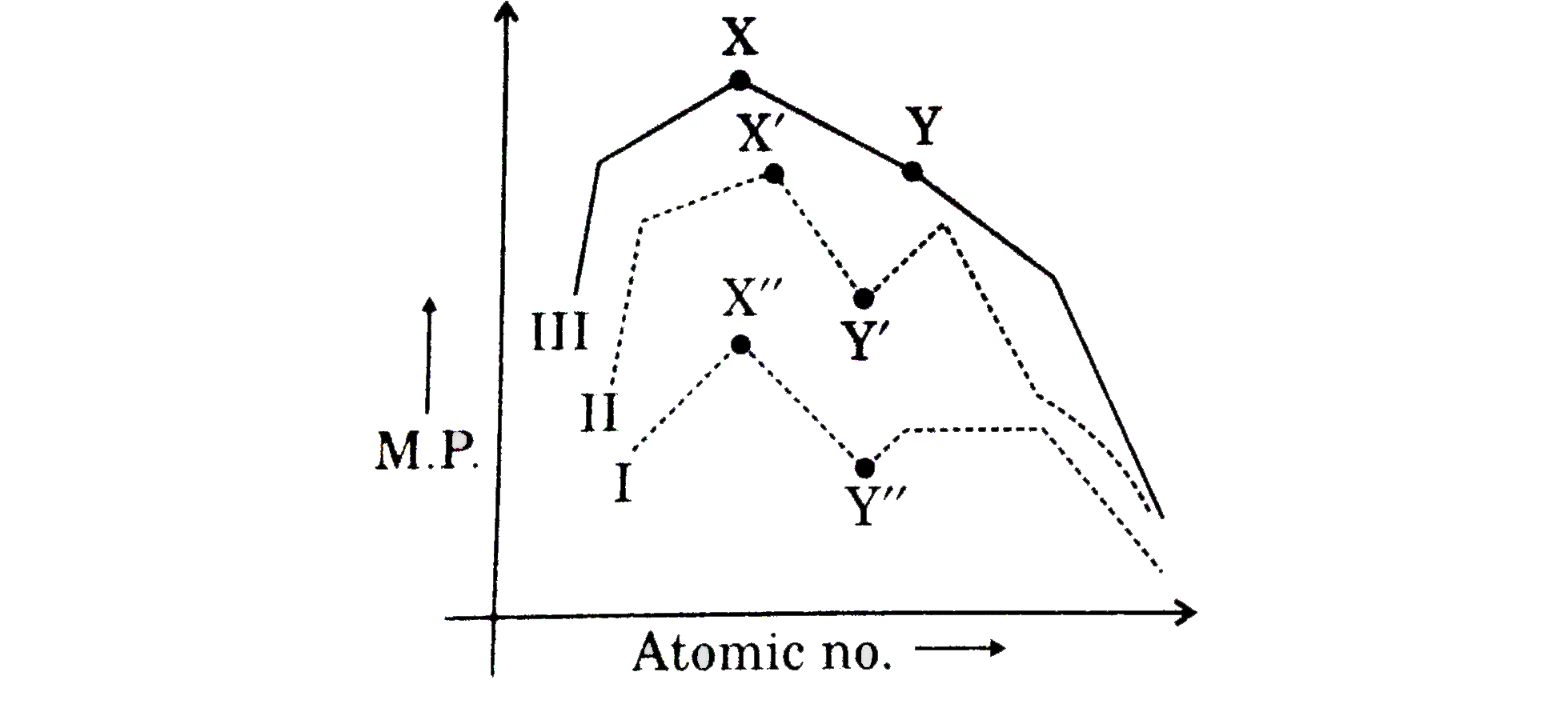Give similarities and differences in the elements of 3d,4d and 5d series.
To analyze the similarities and differences among the elements of the 3d, 4d, and 5d series, we can break down the properties into two categories: similarities and differences.
Step 1: Identify the Series
- The 3d series includes elements from Scandium (Sc) to Zinc (Zn).
- The 4d series includes elements from Yttrium (Y) to Cadmium (Cd).
- The 5d series includes elements from Lanthanum (La) to Mercury (Hg).
Step 2: Similarities
1. Conductivity: All three series consist of elements that are good electrical and thermal conductors. This is due to the presence of d-electrons that can move freely and carry charge.
2. Reducing Agents: All elements in these series exhibit good reducing properties. They can donate electrons in chemical reactions, which is a characteristic of transition metals.
3. Metallic Nature: All elements in the 3d, 4d, and 5d series are metals, exhibiting typical metallic properties such as luster and malleability.
Step 3: Differences
1. Magnetic Properties:
- The 3d series can exhibit paramagnetism due to unpaired electrons in their d-orbitals.
- The 4d and 5d series are predominantly diamagnetic, meaning they have all paired electrons and do not exhibit magnetic properties.
2. Oxidation States:
- The 3d series generally does not exhibit oxidation states higher than +3.
- The 4d and 5d series can exhibit higher oxidation states (up to +6 or +7), which is due to the involvement of f-orbitals in bonding.
3. Atomic and Ionic Sizes:
- The atomic and ionic sizes generally increase from the 3d to the 5d series due to the addition of electron shells.
4. Complex Formation:
- The ability to form complexes varies; the 4d and 5d series elements tend to form more stable and varied complexes compared to the 3d series.
Summary:
In summary, while the 3d, 4d, and 5d series share similarities in conductivity, reducing properties, and metallic nature, they differ significantly in magnetic properties, oxidation states, atomic sizes, and complex formation abilities.
- The 3d series includes elements from Scandium (Sc) to Zinc (Zn).
- The 4d series includes elements from Yttrium (Y) to Cadmium (Cd).
- The 5d series includes elements from Lanthanum (La) to Mercury (Hg).
1. Conductivity: All three series consist of elements that are good electrical and thermal conductors. This is due to the presence of d-electrons that can move freely and carry charge.
2. Reducing Agents: All elements in these series exhibit good reducing properties. They can donate electrons in chemical reactions, which is a characteristic of transition metals.
1. Magnetic Properties:
- The 3d series can exhibit paramagnetism due to unpaired electrons in their d-orbitals.
- The 4d and 5d series are predominantly diamagnetic, meaning they have all paired electrons and do not exhibit magnetic properties.
- The 3d series generally does not exhibit oxidation states higher than +3.
- The 4d and 5d series can exhibit higher oxidation states (up to +6 or +7), which is due to the involvement of f-orbitals in bonding.
- The atomic and ionic sizes generally increase from the 3d to the 5d series due to the addition of electron shells.
- The ability to form complexes varies; the 4d and 5d series elements tend to form more stable and varied complexes compared to the 3d series.
In summary, while the 3d, 4d, and 5d series share similarities in conductivity, reducing properties, and metallic nature, they differ significantly in magnetic properties, oxidation states, atomic sizes, and complex formation abilities.
Similar Questions
Knowledge Check
- Question 1 - Select One

Refer to the graph for trends in M.P. of transition elements of 3d,4d and 5d series.
Q. Choose the correct statement(s).AIII refers to 3rd transition series of periodic table.BX corresponds to tungstenCY" corresponds to manganese.Dall of the above. - Question 2 - Select One

Refer to the graph for trends in M.P. of transition elements of 3d,4d and 5d series.
Q. A metal having high boiling point:Ahas high enthalpy of atomizationBtends to be noble in their reactionsChas strong metallic bondingDall of the above. - Question 3 - Select One

Refer to the graph for trends in M.P. of transition elements of 3d,4d and 5d series.
Q. What does maxima at point 'X' indicate?AOne unpaired electron per d-orbital is particularly favourable for strong inteeratomic interaction.BStrong metallic bonding.CBoth a and bDNone of the above.
State reasons for the following:
(i) Cu (1) ion is not stable in an aqueous solution.
(ii) Unlike Cr3+,Mn2+,Fe3+ and the subsequent other M2+ ions of the 3d series of elements, the 4d and 5d series metals generally do not form stable cationic species.View SolutionWrite the name of last transition element of 3d series.
View SolutionRead the given passage and answer the questions number 1 to 5 that follow :
The d-block of the periodic table contains the elements of the groups 3 - 12 and are known as transition elements. In general, the electronic configuration of these elements is (n - 1) d1−10ns1−2. The d-orbitals of the penultimate energy level in their atoms receive electrons giving rise to the three rows of the transition metals i.e., 3d, 4d and 5d series. However, Zn Cd and Hg are not regarded as transition elements. Transition elements exhibit certain characteristic properties like variable oxidation states, complex formation, formation of coloured ions and alloys, catalytic activity, etc. Transition metals are hard (except Zn, Cd and Hg) and have a high melting point.
Why are Zn, Cd and Hg non-transition elements ?View SolutionAssertion: The metals of 4d and 5d greater entalpies of atomisation than the corresponding elements of the 3d series.
Reason: The metal-metal bond in 4d and 5d series are stronger than those in the 3d series.View SolutionAssertion: The metals of 4d and 5d greater enthalpies of atomisation than the corresponding elements of the 3d series.
Reason: The metal-metal bond in 4d and 5d series are stronger than those in the 3d series.View Solution

